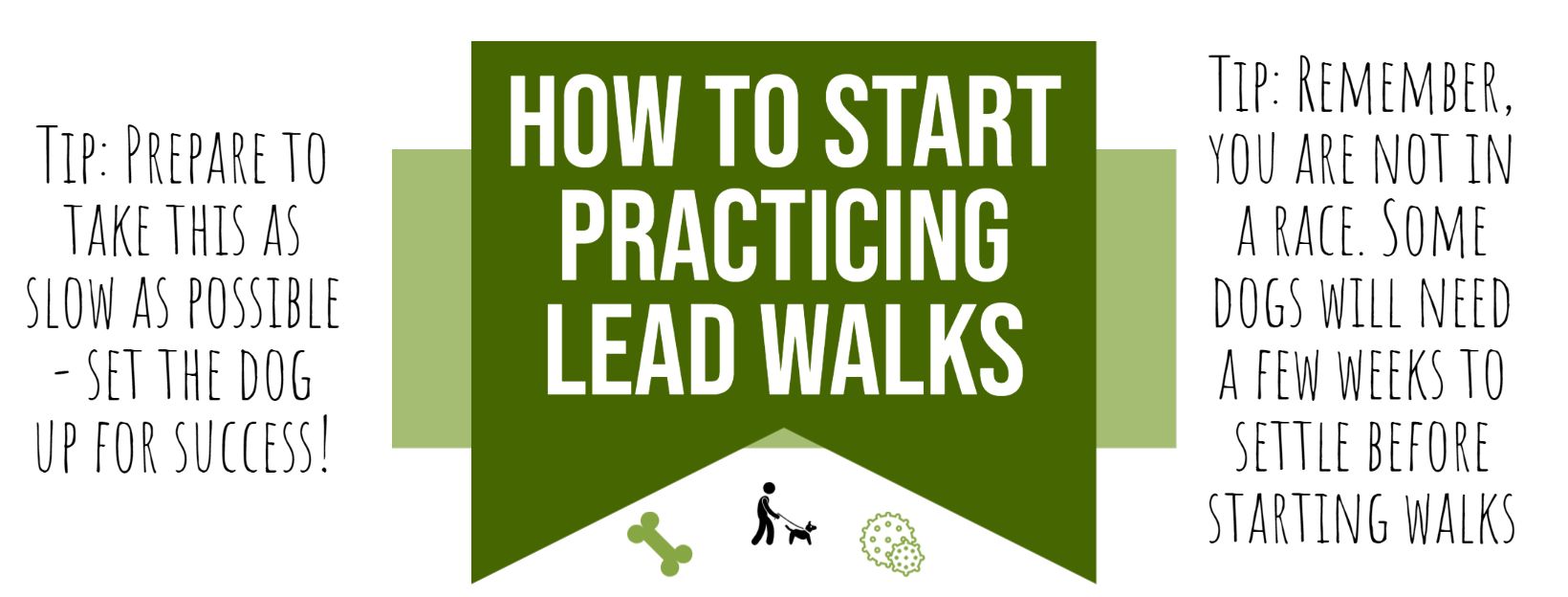
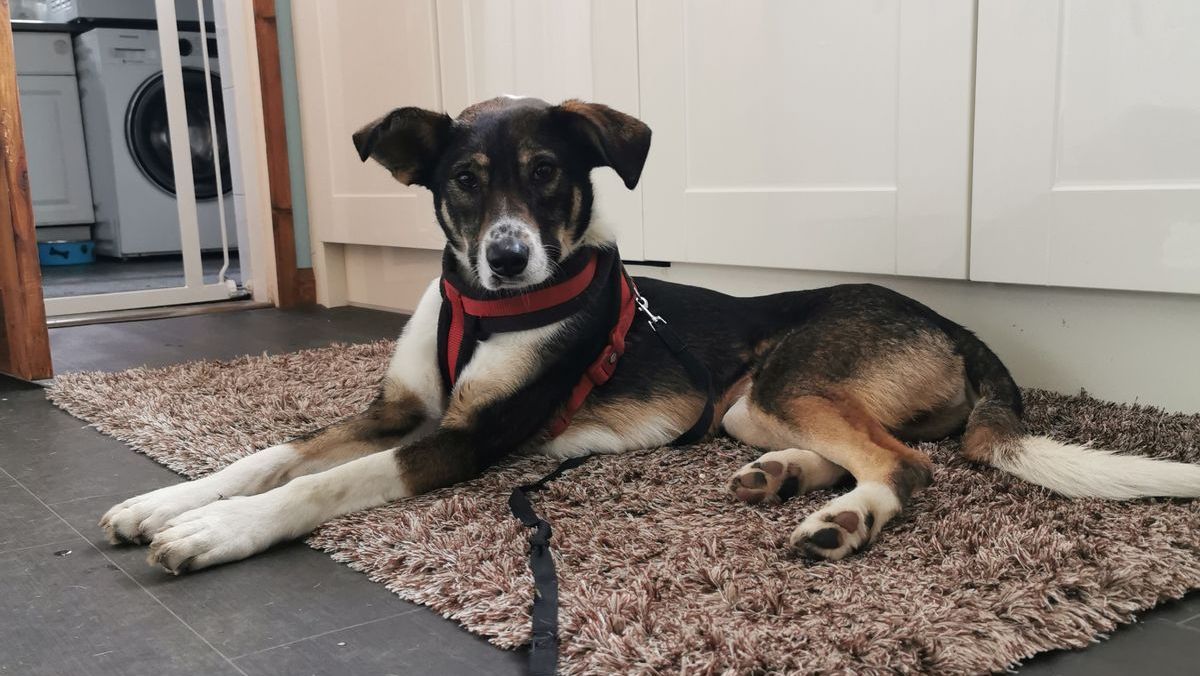
Take it steady...
When we take on a dog our mind can wander off into idealistic fantasies of walking your dog in the Lake District or heading out on a 2 mile walk as soon as possible.
Unfortunately, none of our rescues will be up to that for a good while and there will be lots of time and patience needed to get the dog used to walking on a lead with you.
In the next stage we will discuss loose lead walking, however, this can be practiced once your dog is comfortable and confident walking with you on lead.
First off, we recommend waiting until you can touch your dog before trying to train them to walk on lead. Follow our guidance on how to desensitise your dog to having a trailing line and collar placed on and off.
Catchpole Trauma
Pretty much all the Romanian dogs will have been moved around or transported with a noose-type catchpole prior to their arrival on the UK and lots of tension around the neck and trigger these memories.
Catchpoles are not something we like, however, shelter workers are reluctant to touch dogs with their hands. International Dog Rescue are working on building their own shelter where they will handle the dogs much better.
If you just put a lead on your dog and drag it around the garden you will find that it resists and will fight against you or try to pull away which will damage your relationship with the dog. If the dog is frightened or pulling away STOP.
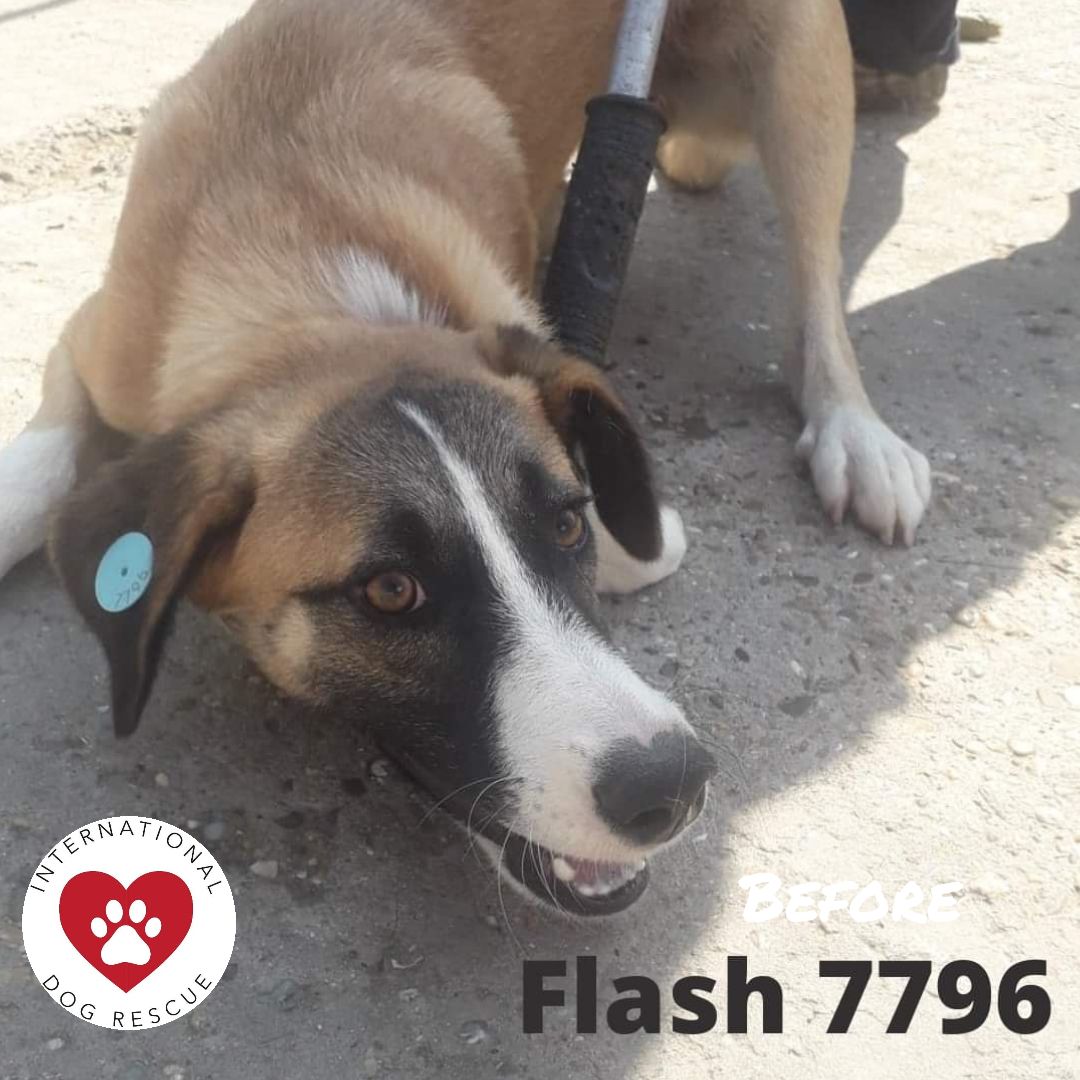
Where to start...
Lead tension:
- You need to start at the very beginning. Once your dog is happy to walk around with a trailing line on you can very gently pick up the lead for a few seconds apply no pressure and then release it. Repeat, repeat, repeat and reward them. This seems like nothing but the dog will feel the sensation and begin to get used to it.
- Once happy with the lead being touched and picked up you can start to hold it with a tiny bit of tension in the lead but so it is still loose, reward them. Some dogs will freak at this, some will be okay. If your dog panics, stop and go back to basics.
- If they are comfortable with the above what you can do is get a good handful of treats and begin to either drop the treats on the floor at a small distance from the dog to begin with or lure the dog along with treats so that they are moving whilst you are holding the lead.Start off doing only a couple of steps and gradually increase it so they are following treats from room to room.
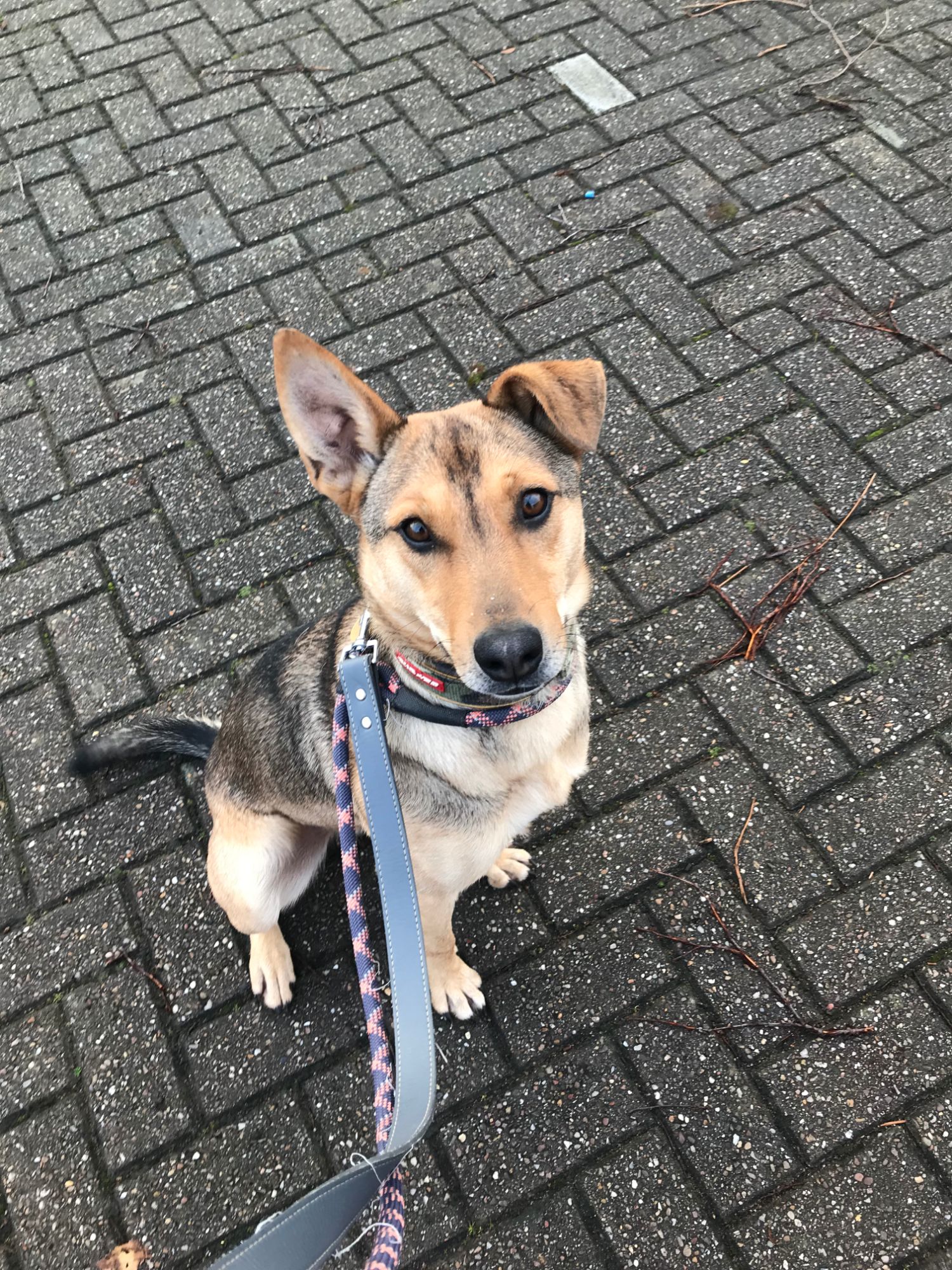
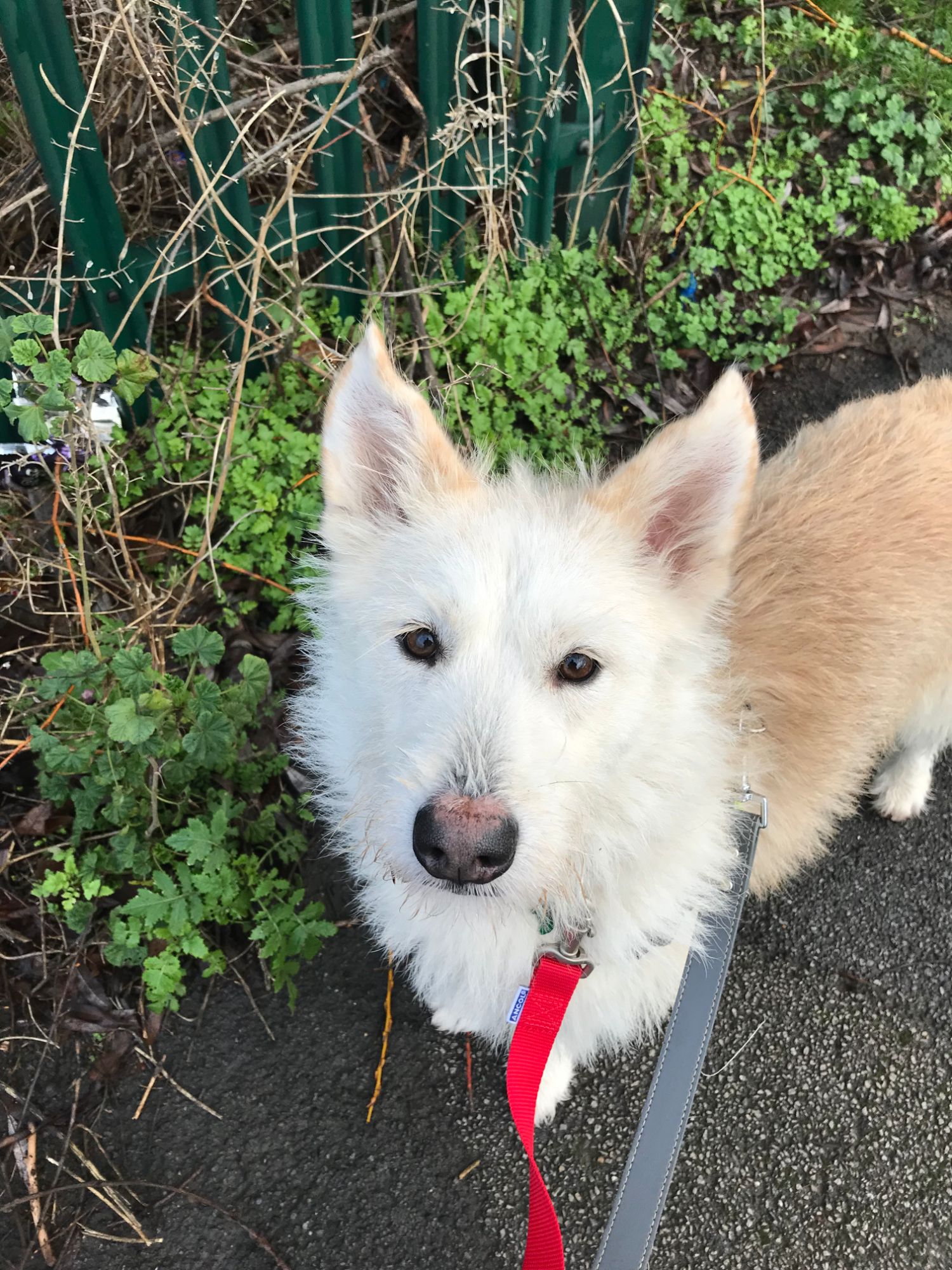
Garden time:
- Once your dog is following treats around whilst you are holding the lead you can begin to cut the treats down and call the dog to encourage them to move and follow you or your hand.
- If they are progressing with this try to complete the above step in the garden. The change of setting could set them back a bit, so ensure to use treats to make it positive again.
- Keep sessions short, you may find that your dog will only walk 5 steps in the garden to begin with, but the more you practice this with them the more comfortable they will become.
- If the dog is beginning to weave around you in the garden you can walk with a treat in your hand, by your side so the dog can follow it with their nose. Praise them for walking by your side and reward them.
- Continue walks around the garden, gradually increasing the length of time until the dog is relaxed, following you around multiple laps of the garden space.
These steps usually take at very minimum a week, so do not rush through the steps. Don't feel disheartened if it it taking weeks to progress - you dog has NEVER been led around on a lead before, it can take them a long time to get used to it. Take your time. You NEED to get to the point where your dog is relaxed when plodding around with you. If a little bit of tension is spooking them you need to go back a few steps and work back up. The more you work on this the better. You can never practice these steps too much.
Do not get frustrated. If you feel yourself becoming irritated, stop and continue another day.
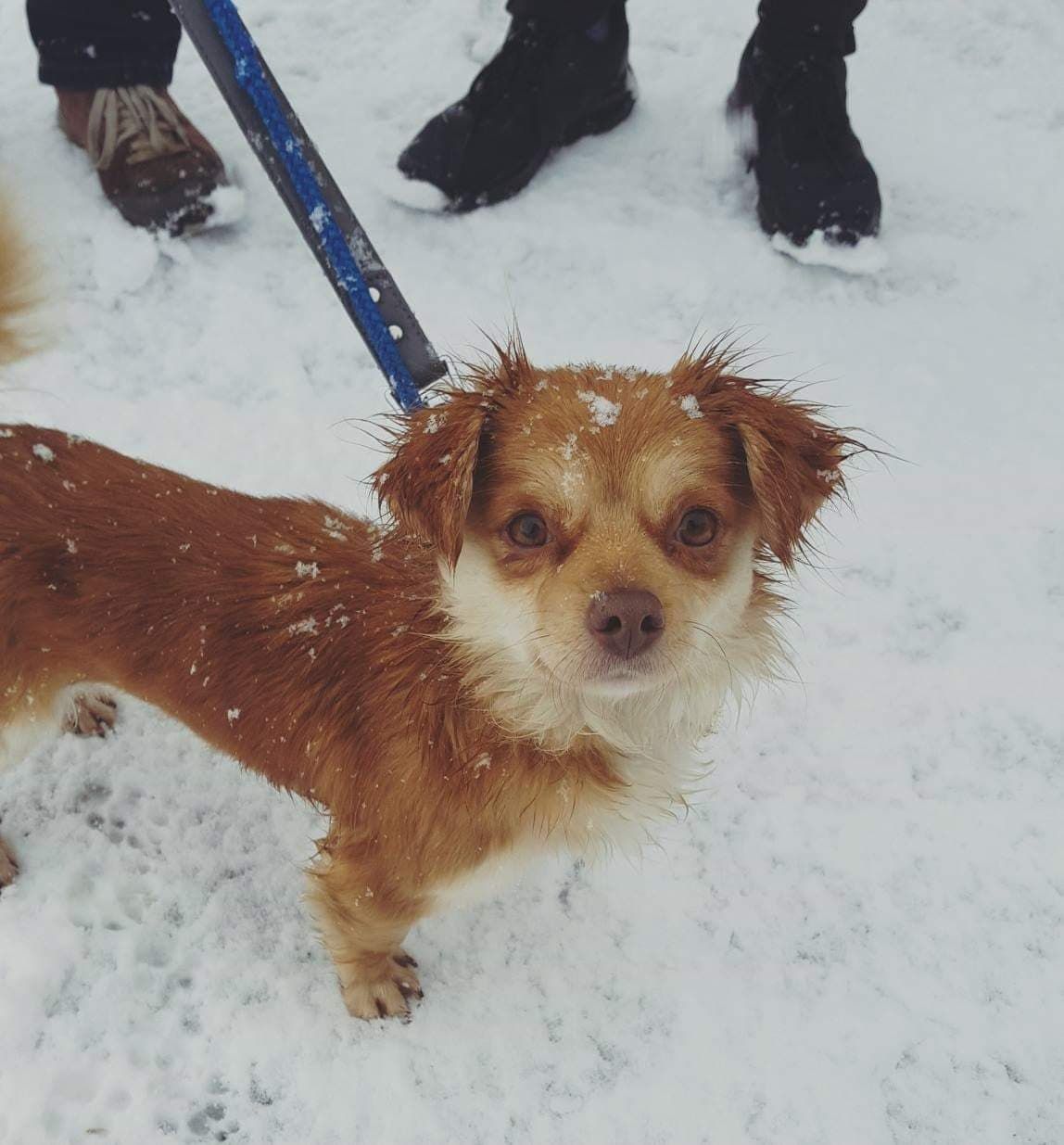
Taking it to the streets:
- If your dog has completed all the above and is trotting beside you in the garden comfortably, tail high, wagging and looking alert it's time to think about trying them outside.
- Find a quiet time and quiet spot to try them outdoors. If you have a tenfoot, alley way or drive you can use they are great locations to begin with. If not, if your back garden leads to a quiet street away from cars, people and dogs that's the way to go.
- Again, your dog may regress to begin with heading out of the home space. They will be having a sensory overload from the new sights, smells and sounds now that they are away from the safety of the garden.
- Your first walk should only last 2-5 minutes. Do not exceed this. You want to set them up for success and enjoy being outside. Forcing them past their threshold will cause them to panic or react.
- Take treats with you and allow the dog to sniff the environment. You will likely move at 1 mph whilst they are gathering their barings, this is perfectly normal.
- If your dog stops taking treats, looks worried., stops or tries to pull back, turnaround and go home. That's enough for today.
Threshold
- Every dog has a threshold. This is a point at which the dog can no longer cope with the situation they have been put in.
- A dog will try to tell you they are reaching their threshold through their body language and it is important that you watch your dog carefully.
- If your dog is starting to display anxious behaviour, stop, pull back or pant it's time to go home. If these signals are ignored and the dog is made to continue it can lead to behavioural issues.
- Forcing a dog to walk when they are past their threshold can lead to reactivity or redirected frustration. They could begin to bark at dogs, people, objects around them to tell them to go away (most people mistake this for 'protecting the owner'). If this is ignored it could lead the dog to become frustrated and take this out on the handler or to things coming too close to them and result in a bite.
Listen to what your dog is trying to tell you.
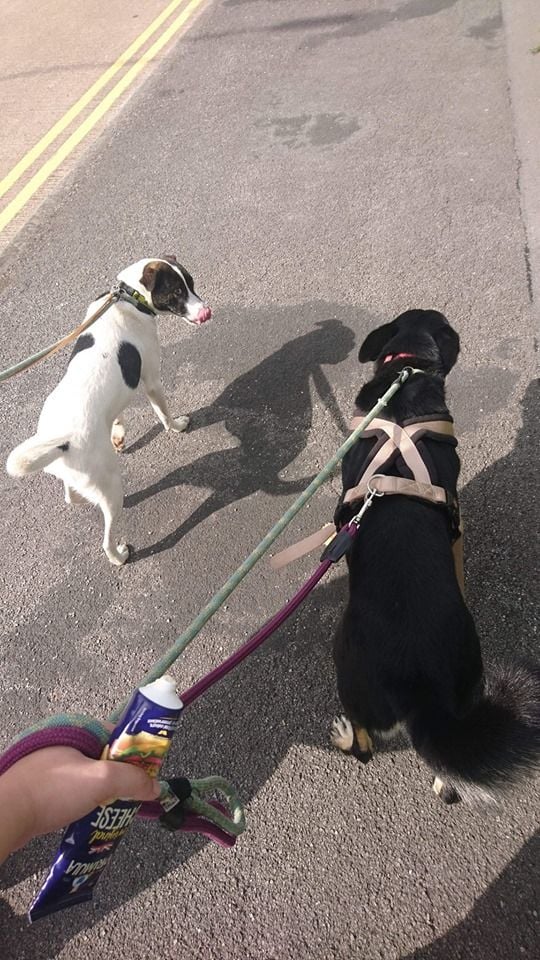
Time to enjoy...
After walking your dog a good few times in quieter areas and building your walks up from 5 minutes to 10 minutes and so on increasing in little increments at a time, you will find that your dog is beginning to enjoy the outdoor world and wants to go further and further.
It is advised that you continue to choose quiet walks, as lots of hustle and bustle can be very overwhelming.
Please ensure that your dog is double leaded (clip and slip-lead) for at least 3-4 weeks whilst getting used to walks. The last thing you want is for the dog to get startled on a walk and slip their lead, collar or harness and runaway from you. If you have a particularly nervous dog, it is advised that the slip lead stays on longer than this as they are more likely to spook on a walk.